It was 50 years ago today, Sergeant Pepper taught the band to play. They’ve been going in and out of style, but they’re guaranteed to raise a smile…
Which is why the Blue Meanies sealed them in a soundproof bubble and attacked Pepperland. Bonkers – men with long legs – dropped giant apples on people. Snapping Turks – fez-wearing, possibly racially-insensitive men with snapping jaws on their stomachs – chomped out anything that gave them joy. Then there was the malevolent, flying Glove that literally smashed out any signs of love.
It is all up to Young Fred (Lance Percival: That Was the Week That Was series) – a man in his sixties – to take the flying Yellow Submarine, used by Pepperland’s forefathers (a string quartet) years yonder, and get help. But who could save the day? Maybe The Who? The Jimi Hendrix Experience? Rod Stewart? No, they needed someone bigger than Rod. They needed a group of people who looked surprisingly like Sergeant Pepper’s Lonely-Hearts Club Band, who even sang about said band, and about a yellow submarine.
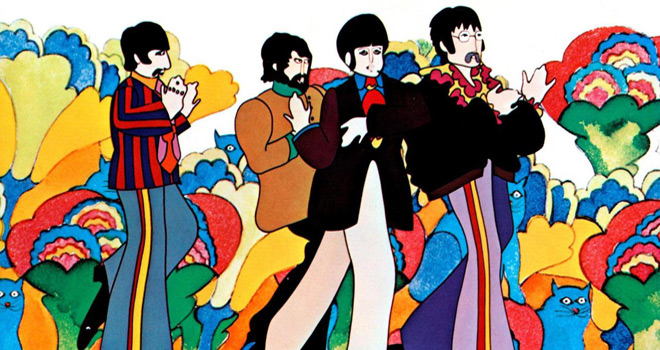
Yeah, it is obviously The Beatles, and the story is most certainly that of their animated musical Fantasy Comedy Yellow Submarine. Released in the UK on July 17th, and in USA on November 13th of 1968, the film has influenced many, for better or worse, throughout its now 50 years of existence across a range of media. It has turned up in music videos, either as a direct link to the Beatles (Oasis’ “All Around the World”), or to its trippy design (Kesha’s “Your Love is My Drug”). There are even references to it in video games, like the submarine of a ‘purely coincidental’ color in 1994’s Earthbound, or in 2002’s Super Mario Sunshine. There was even a pro-wrestler in ECW and the WWE called the Blue Meanie.
But how did it all start? Well, the original “Yellow Submarine” song appeared 2 years prior to the film on the Revolver album. It was also issued as a single and went to #1 on every major UK chart, and at #2 on the Billboard Hot 100 chart. Granted, it was as the B-side to “Eleanor Rigby,” but it has become one of the Fab Four’s most recognizable songs. It did not have much meaning beyond being a nonsense song for children that could fit Ringo Starr’s vocal range. Paul McCartney thought there was enough to it for a children’s film. In The Beatles Anthology book from 2000, Paul McCartney said, “I thought they should just have a man who sailed to sea and went to the land of submarines,” suggesting it could be the greatest Disney movie ever – only with (The Beatles’) music.
The Beatles themselves had little involvement beyond the music and a live-action cameo. The film was devised as a quicker, easier way to satisfy their contractual agreement with United Artists for a third film after 1965’s Help. Likewise, the cameo was to live up to the contract’s statement of actually appearing in the film. Their roles were taken up by other voice actors as the band were working on other projects. Though they did talk to the writers – notably Erich Segal (Love Story 1970, A Change of Seasons 1980) – about what to put in it. In the Anthology, John Lennon said he came up with the Hoover – the cartoon monster that sucks everything up. While McCartney said, “They felt they ought to pick up on where we had been up to, which was Sgt Pepper, but a Bambi (-esque film) would have been better for me at the time.”

A Disney-style film might have aged better, yet it is hard to imagine it being as iconic as Art Director Heinz Edelmann’s 1960’s flair. Directed by George Dunning (The Beatles series, The Flying Man 1962), it took 200 artists 11 months to develop. This included Dianne Jackson (The Snowman 1982, Granpa 1989), Gerald Potterton (Heavy Metal 1981, Young Robin Hood series), Charlie Jenkins (Moonshadow 1972), and Bill Sewell, who worked on the ‘Lucy in the Sky with Diamonds’ sequence. It stands out as the smoothest scene in the film due to Sewell’s rotoscoping and Jenkins’ editing. The rest of the film moves more stiffly in comparison, using a limited animation style more akin to the shorts in Monty Python’s Flying Circus. Its art style is stunningly vibrant, yet the way it moves is more pedestrian by comparison.
Not that it stopped the film reaching an audience or impressing the Beatles themselves. For the Anthology, Ringo Starr said, “it’s still great and I’m glad we were involved with it,” while George said, “ it works for every generation – every baby, three or four years old, goes through Yellow Submarine.” Not that they did not have their criticisms. Paul was not so keen on the cast’s Liverpool accents, saying, “it’s like Americans trying to do Cockney – the Dick Van Dyke syndrome.” While Ringo said he could not tell the difference between John Clive (The Italian Job 1969) as Lennon and Paul Angelis (For Your Eyes Only 1981) as himself, mistaking both roles as being played by Geoffrey Hughes (Coronation Street series, Keeping Up Appearances series), who played Paul.
The criticism does hold up to a degree. The Cheshire-born Hughes does a fair job as Paul, though London-born Clive does not sound much like John Lennon. Yet neither are the best or worst Beatle. Fellow Liverpudlian, or Scouser, Angelis put on a near 1:1 performance as Ringo, while also chewing the scenery as the Chief Blue Meanie. However, he was also called upon to finish off George’s lines as his actor – Peter Batten – was arrested as a British Army deserter halfway through production. As a result, George sounds like two different Scousers, neither of whom sound like the real deal. Thankfully, neither Percival or beloved UK Entertainer Dick Emery (The Dick Emery Show series) had to put on accents for their roles as Young Fred and Jeremy Hillary Boob respectively.
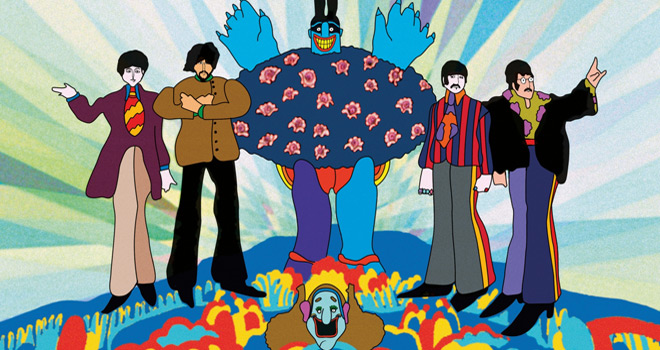
The film stands strong in the Beatles’ filmography, standing only below 1964’s A Hard Day’s Night critically. Its hallucinogenic visuals – like the Sea of Monsters and “Eleanor Rigby” sequence – do carry most of the film. The film’s wordplay is rather underrated (“What do you know about holes?” “There are simply no holes in my education!”) and it picks up for the finale after lulling once the gang reaches Pepperland. Unlike Help, which loses energy after they reach the Bahamas. Or 1967’s Magical Mystery Tour, which might have been better off as a series of music videos.
Fifty years later, Yellow Submarine is perhaps better off as being a window to the happier side of the 1960s. It does have rickety animation and some odd vocal performances, but it serves as the most visually pleasing time capsule to The Beatles at their prime, making it a historic cinematic moment in time.
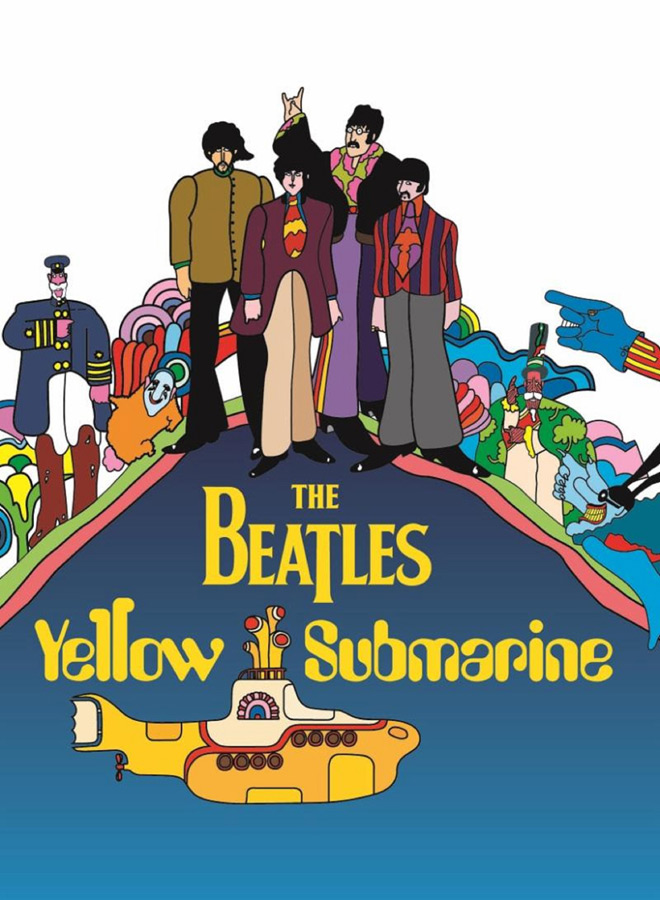

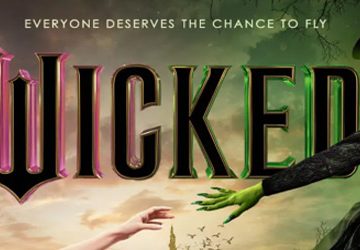
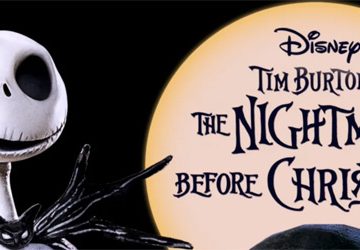


No comment